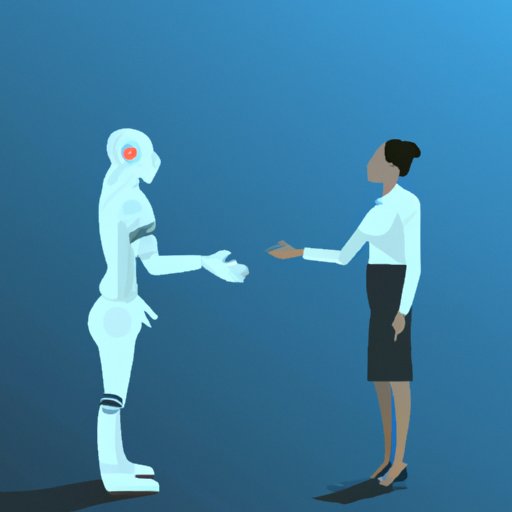Introduction
Human-robot interaction (HRI) is the study of how humans interact with robots and the impact that this type of interaction has on both parties. It is an interdisciplinary field which combines elements of robotics, artificial intelligence, psychology, sociology, and engineering. The purpose of this article is to examine the benefits, challenges and recent advances associated with HRI, as well as exploring the social implications and ethical considerations.
Examining the Benefits of Human-Robot Interaction
The potential benefits of HRI are numerous. For example, robots can be used to increase efficiency by automating repetitive tasks and processes, such as assembly line production. This can lead to cost savings for companies, as well as improved quality of life for employees who no longer have to perform mundane tasks. Additionally, robots can be used to assist with dangerous or difficult tasks, such as search and rescue operations or exploration of hazardous environments.
Exploring the Social Implications of Human-Robot Interaction
The introduction of robots into the workplace can have a significant impact on employment. Although robots can increase efficiency and reduce costs, they can also lead to job losses as certain roles become obsolete. This can have a negative effect on communities, as people may struggle to find new employment opportunities. Furthermore, robots can also lead to changes in social norms, as people adjust to the presence of robots in their daily lives.
In addition, the introduction of robots into relationships can have a profound effect on how people interact with one another. Robots can provide companionship and emotional support, but they can also create a feeling of disconnection between people. As robots become increasingly intelligent and sophisticated, it is important to consider the implications of this development for our understanding of human relationships and interactions.
Assessing the Safety Challenges of Human-Robot Interaction
The safety of humans interacting with robots is a major concern. There is a risk of injury if a robot malfunctions or is not properly programmed. Additionally, there are security concerns regarding the potential for robots to be hacked or reprogrammed for malicious purposes. Lastly, there is the potential for robots to be abused, either through physical or psychological means.
Investigating the Ethical Issues of Human-Robot Interaction
The ethical implications of HRI must also be considered. Questions of autonomy and responsibility arise when robots are given decision-making capabilities. Additionally, robots can access vast amounts of personal data, leading to privacy issues. Finally, moral considerations must be taken into account, such as whether robots should be granted rights or protections similar to those of humans.
Analyzing Recent Advances in Human-Robot Interaction Technology
Recent advances in technology have enabled robots to become increasingly capable of interacting with humans. Voice recognition and natural language processing allow robots to understand verbal commands and respond accordingly. Additionally, AI-based decision making enables robots to make autonomous decisions based on their analysis of data and surroundings.
Comparing Human-Robot Interaction to Other Forms of Human-Computer Interaction
HRI differs from other forms of human-computer interaction, such as automation, in that it involves direct contact between humans and robots. This can lead to different technical limitations, as well as different social implications. For example, humans may be more likely to trust robots if they perceive them as being “human-like” rather than simply automated machines.
Conclusion
HRI has the potential to revolutionize the way we interact with technology, providing numerous benefits. However, there are also numerous challenges and ethical considerations which must be addressed before robots can be fully integrated into our lives. Recent advances in technology have enabled robots to become increasingly capable of interacting with humans, and it is important to understand the implications of this development for our society. In conclusion, HRI presents both opportunities and risks, and further research is needed to ensure that these technologies are developed and utilized responsibly.
(Note: Is this article not meeting your expectations? Do you have knowledge or insights to share? Unlock new opportunities and expand your reach by joining our authors team. Click Registration to join us and share your expertise with our readers.)
